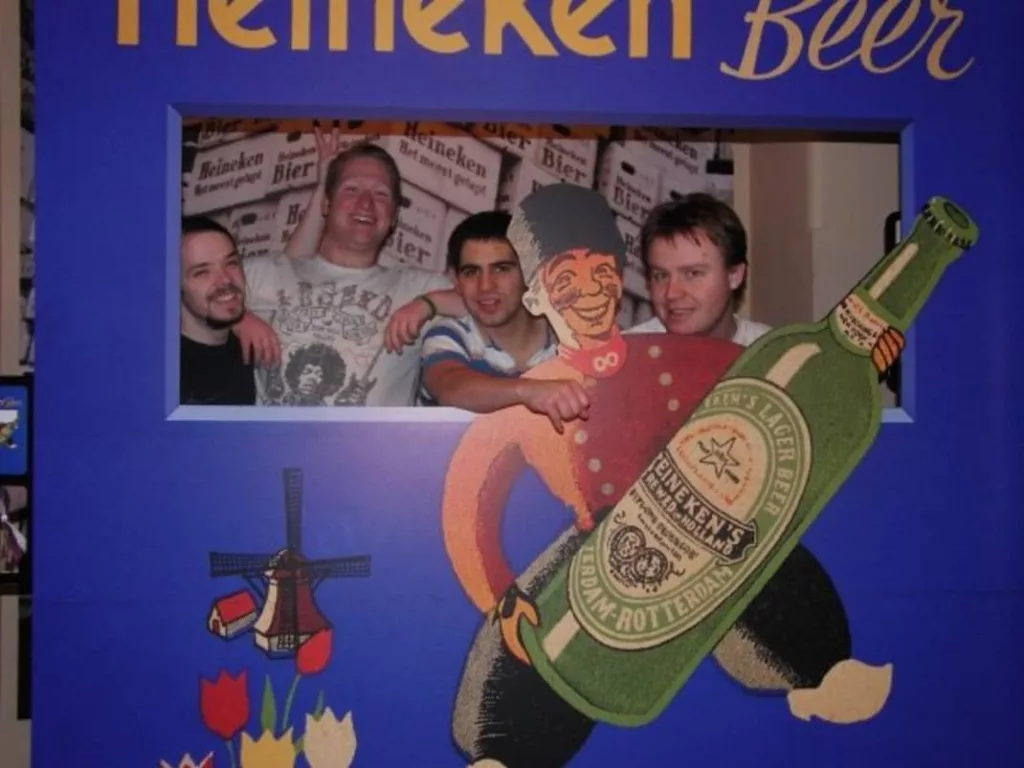An obvious aspect of Amsterdam we wanted to explore was beer. If you walk through Amsterdam’s city centre for more than a minute you are bound to see a bar with a Heineken sign sticking out of it. So we decided to visit the Heineken brewery.

The place was obviously not a real brewery. It was more designed so that tourists could see, feel and taste each stage of the brewing process and their resulting states.
We saw how it started with malt barley mixed with hot water (mashing) in a mash tun. Mashing generally takes a couple of hours. The ‘mash’ is then washed to separate the liquid (wort) from the spent grain.
This sweet wort is then placed into a giant kettle, known as a ‘copper’, and boiled for around an hour. The water evaporates during this stage, and any leftover enzymes from the previous stage are also destroyed. At this stage hops is added to the mix, and it is this that gives the beer its bitter taste. The more hops added, the bitterer the beer.
After this the hopped wort is cooled and transferred to a fermenter (essentially a large vessel for the beer to ferment). Yeast is added and the beer is left to ferment for any number of weeks, depending on the kind of beer desired.
The last stage of the tour is a demonstration on how Heineken is served. It was explained how the head is important in keeping the beer fresh; the 250ml glasses mean the beer doesn’t get warm before you finish it (unlike pints or, if you’re in Bavaria, litres); and how slicing the head of the top of the glass with a plastic spatula soaked in water helps to seal the beer. We were all given a glass each and sent on our way after we finished.

One thing I noticed about this area was that there were two taps with a bar surrounding them. The first bar was where the demonstration was performed, but the other tap was dripping beer, and was surrounded by flies. This seemed weird, but I didn’t think to ask about it. I just thought the place wasn’t being run properly. But then I noticed it in all the bars. Every single bar would have one tap, beer dripping from it, surrounded by flies.

I finally found out why: beer flies are a real problem in certain parts of Europe, so every bar has one tap that is purposefully left with beer dripping from it. This way, the flies are attracted to this one tap and happily buzz around it doing what flies do. The rest of the taps (and everyone’s beers) are left alone, and remain uncontaminated.

Another place we heard about was Brouwerij ‘t IJ (IJ Brewery). It was a brewery and pub attached to a windmill. It’s own beers are more expensive, but a lot stronger, and a lot tastier than the beers brewed by larger companies. We didn’t get to do the tour, but it is definitely one of the better places to drink beer in Amsterdam.

Being in the games industry I work with a lot of Europeans. I have since learned from my Dutch friends that Heineken in the Netherlands is like Fosters in Australia. No one drinks it. In fact, they call it ‘horse piss’.

You’re better off buying Grolsch.




